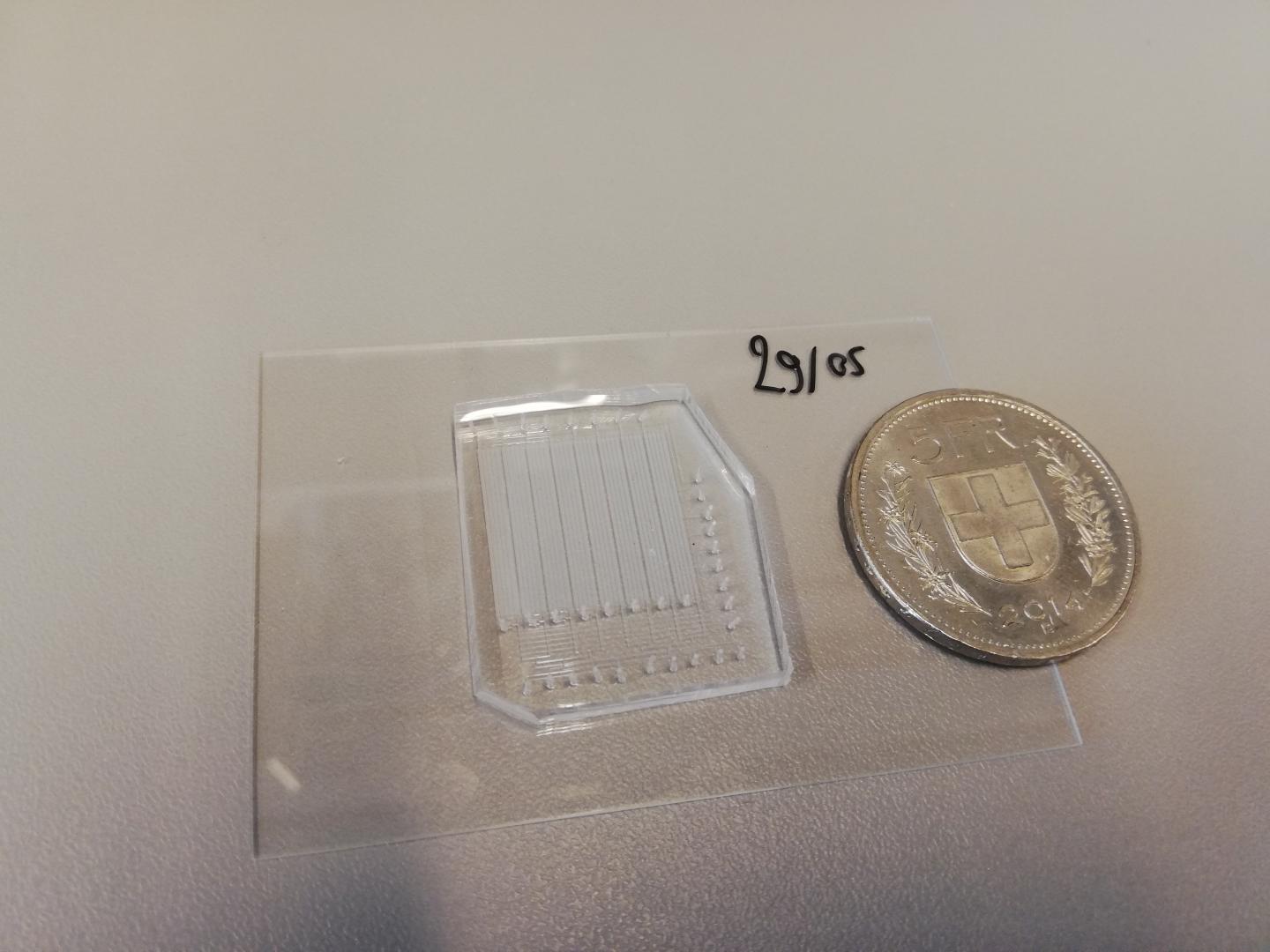
Credit: Ricardo Dainese (EPFL)
In the cell, proteins often interact directly with DNA to regulate and influence the expression of genes. For this to happen, proteins need to travel into the cell’s nucleus where the DNA is tightly twisted and packed as chromatin, which forms the well-known chromosomes.
When the protein reaches its target location, chromatin unwinds to reveal the section of DNA that the protein will interact with. This interaction is obviously of great interest to biologists as it lies at the heart of multiple important cell functions or even malfunctions that lead to disease.
To study protein-chromatin interactions, biologists use a technique called “chromatin immunoprecipitation” (ChIP). The basic idea behind ChIP is to use an antibody that targets the chromatin-binding protein, and then to “pull it down” or precipitate it with the captured section of DNA. The DNA that is bound by the protein is then identified via sequencing, which is why the technique is usually referred to as “ChIP-seq”.
Since it was invented in 2007, ChIP-seq has become the most popular method for studying chromatin-associated proteins like histones and transcription factors. However, it requires a long sequence of manual steps that limit both its throughput and sensitivity.
Now, scientists led by Bart Deplancke at EPFL’s Institute of Bioengineering have developed a new approach to ChIP that promises to automate and lower its cost and complexity. The new method, dubbed “FloChIP” uses microfluidics, a bioengineering field that EPFL has helped developing and expanding.
Microfluidics essentially involves the precise manipulation of fluids through chips that contain multiple, carefully designed channels. Because it mimics the inner dynamics of a cell, this technique can and is already used in a number of bioengineering processes.
FloChIP implements microfluidics to greatly streamline the ChIP workflow. In a paper published in PNAS, the EPFL scientists demonstrate that FloChIP is highly modular and can perform multiple ChIP-seq assays simultaneously and reproducibly in an automated way. In the paper, the researchers show this for both histone marks and transcription factors.
“Thanks to its cost-effectiveness, throughput and general applicability, we believe that FloChIP will establish itself as a valid complement to the existing tools for the study of chromatin biology and protein-DNA interactions,” says Riccardo Dainese, the study’s first author.
“With this new technology, true automation of a difficult assay such as ChIP is within reach,” adds Deplancke. “This will hopefully catalyze an increased use of chromatin-bound proteins as highly informative diagnostic indicators for a wide range of diseases including cancer.”
###
Other contributors
Swiss institute of Bioinformatics
SystemsX.ch
EPFL
Innosuisse
Reference
Riccardo Dainese, Vincent Gardeux, Gerard Llimos, Daniel Alpern, Jia Yuan Jiang, Antonio Carlos Alves Meireles-Filho, Bart Deplancke. A parallelized, automated platform enabling individual or sequential ChIP of histone marks and transcription factors. PNAS 27 May 2020. DOI: 10.1073/pnas.1913261117
Media Contact
Nik Papageorgiou
[email protected]
Related Journal Article
http://dx.





